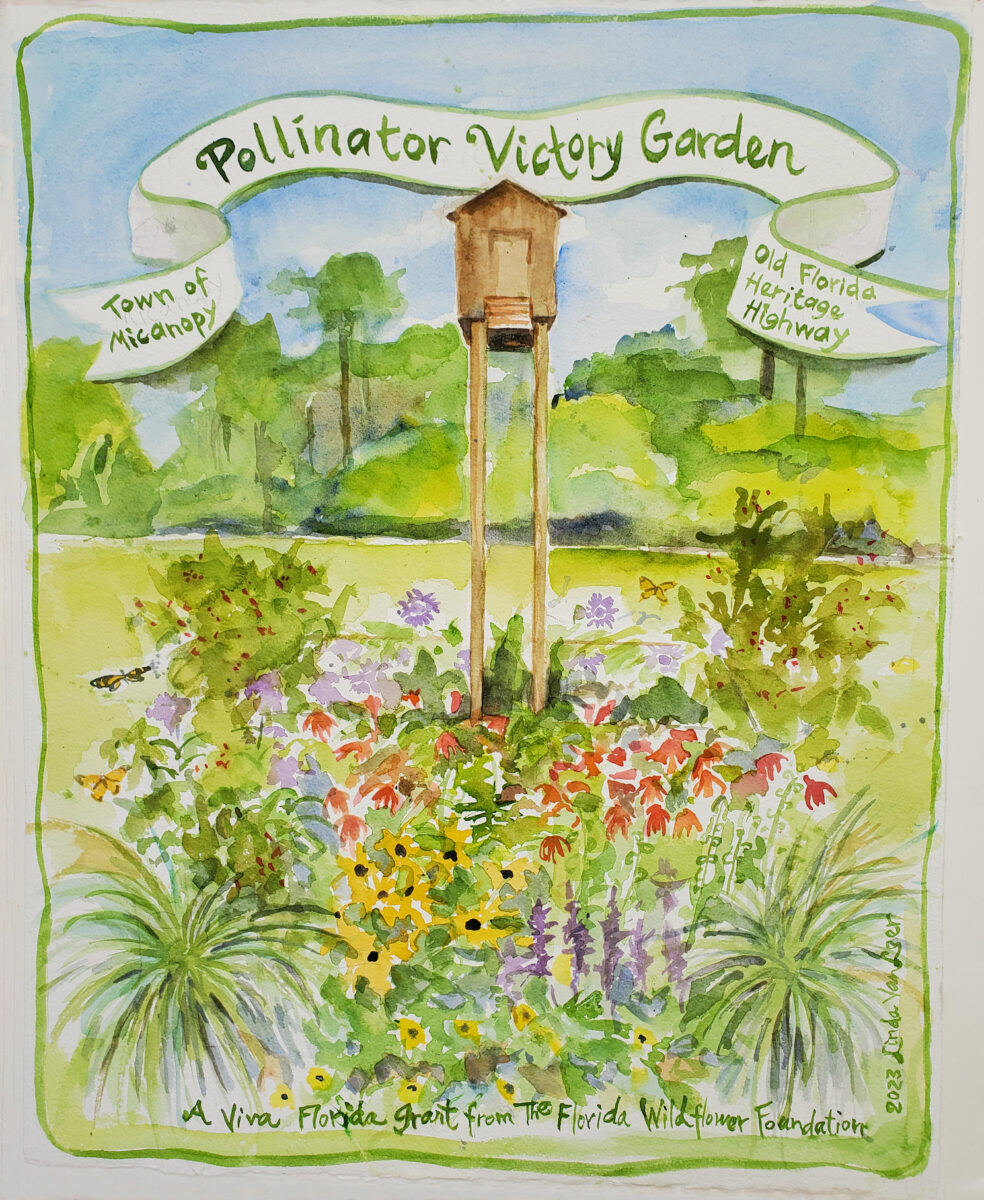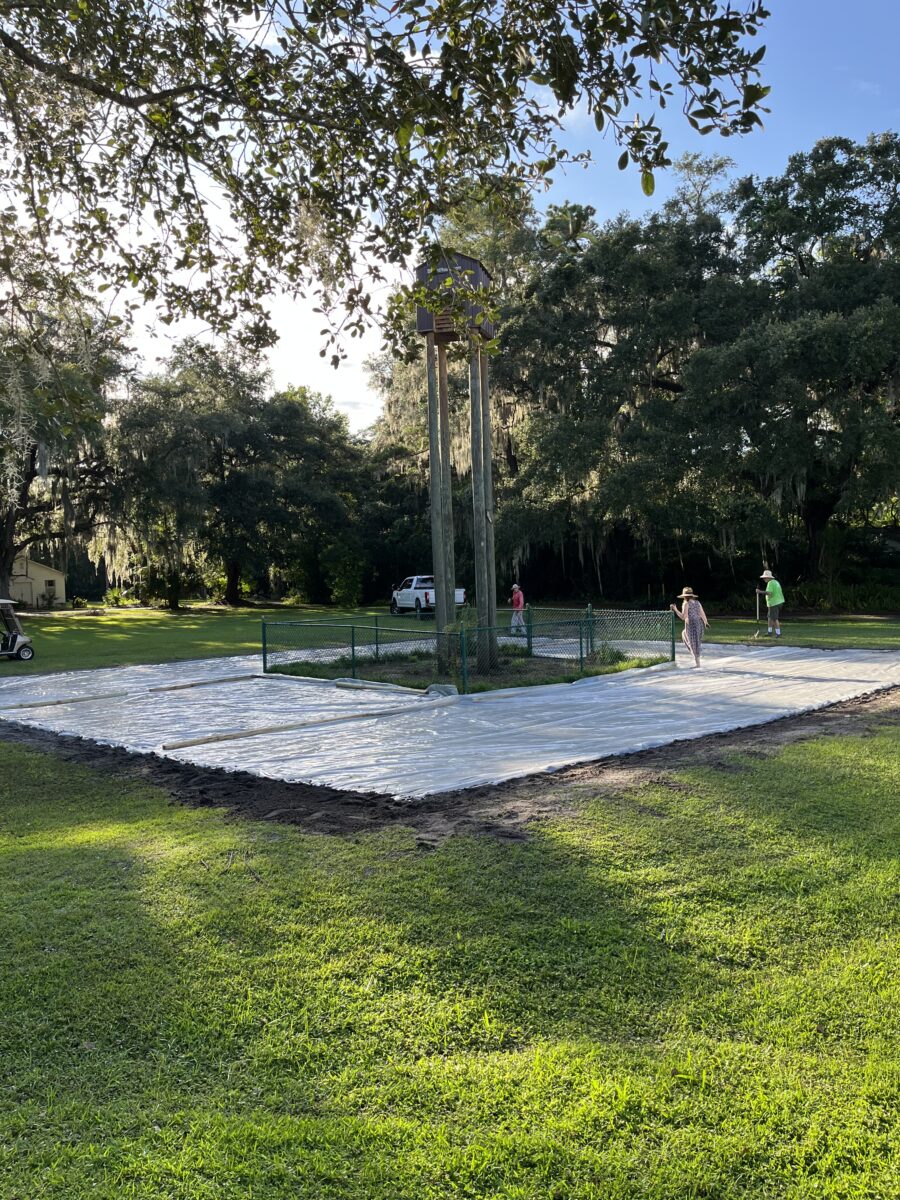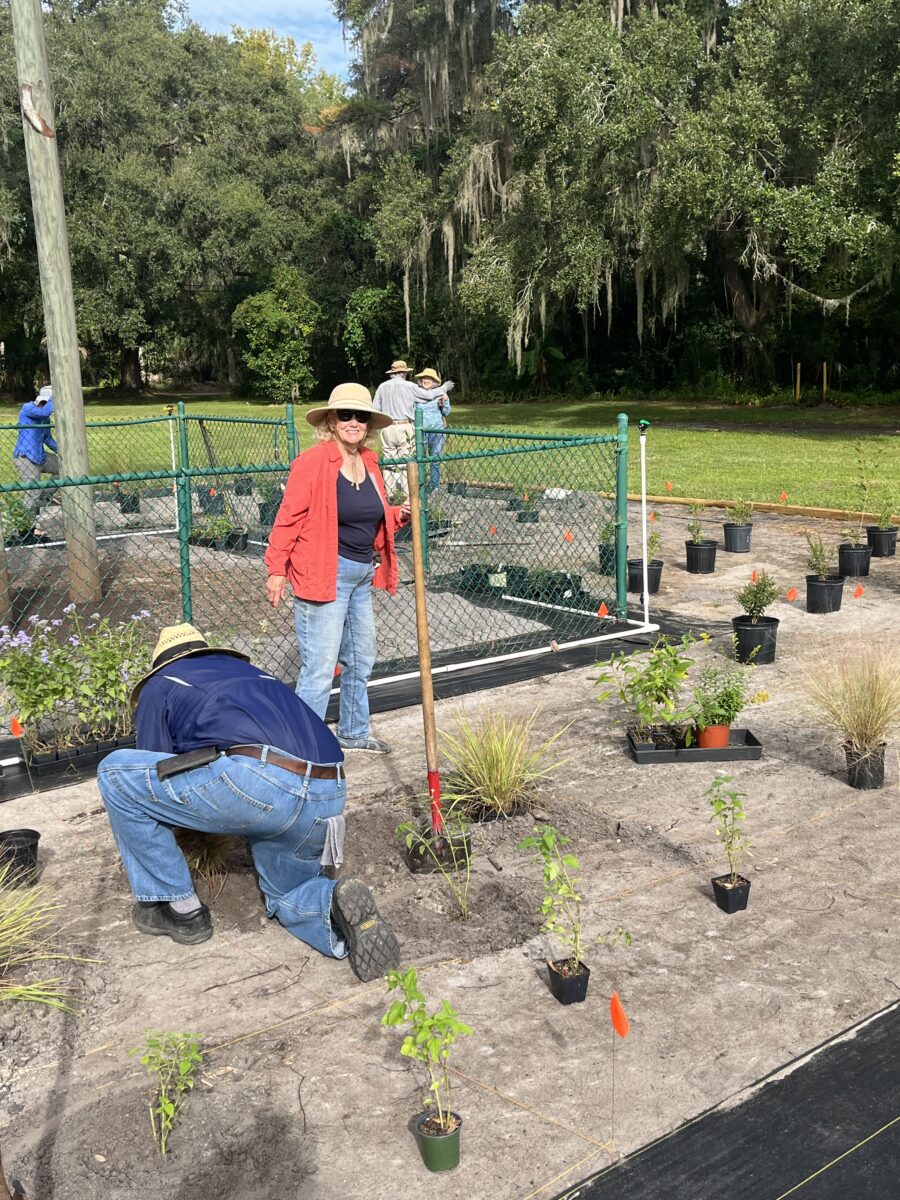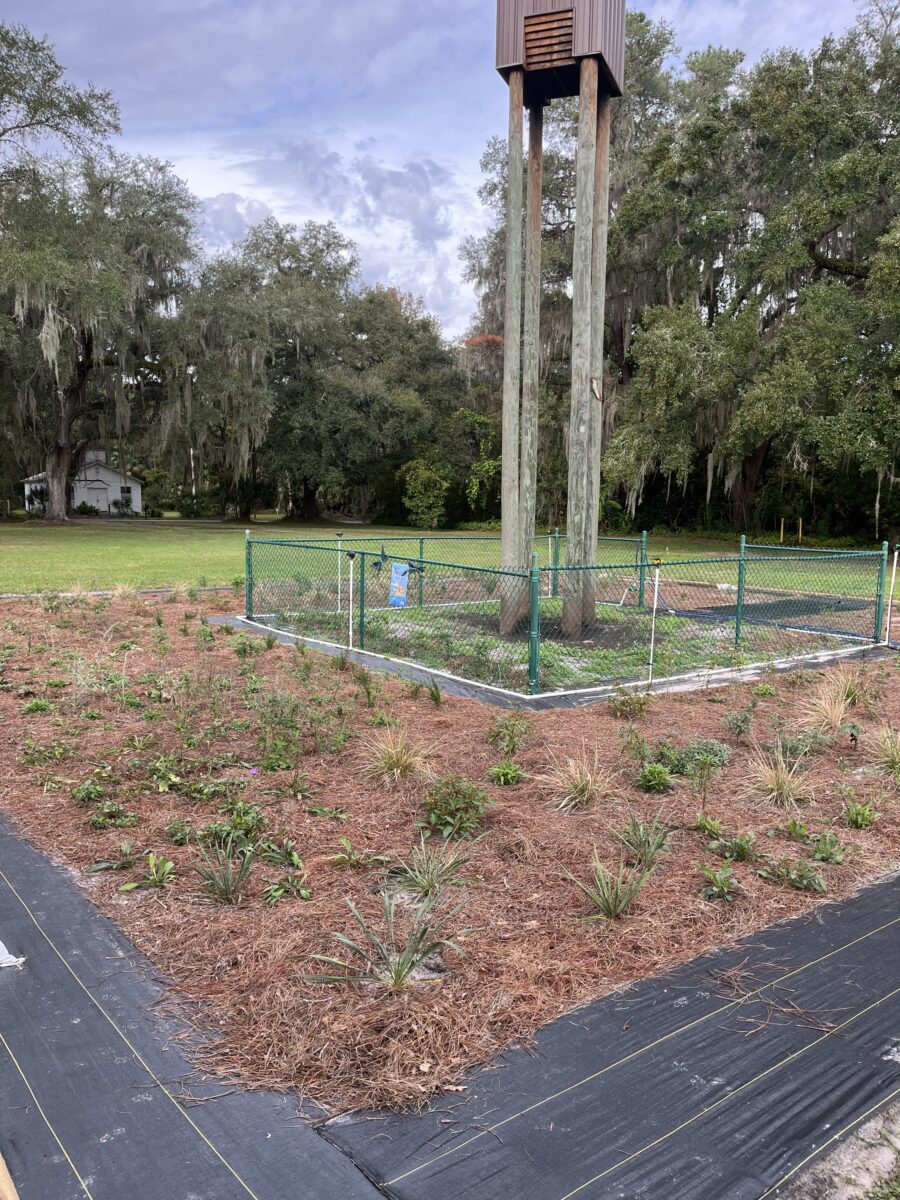Celebrating Micanopy’s Pollinator Victory Garden
by Claudia Larsen
Micanopy, a small town located at the edge of Paynes Prairie State Park between Gainesville and Ocala, recently celebrated its 200th anniversary. Proud of its historic and cultural identity, its residents also celebrated receiving a Viva Florida Landscape Demonstration Garden Grant from the Florida Wildflower Foundation!
The grant application was sponsored by the Old Florida Heritage Highway Corridor Management Council group, whose mission is to advocate roadway enhancements along US 441 and the 48 miles of scenic loop roads that run through Micanopy and small neighboring towns. The Town of Micanopy also partnered with volunteers and provided groundwork for the installation.
The garden has been dubbed the “Micanopy Pollinator Victory Garden” in remembrance of the World War II victory gardens that grew food for families when supplies were scarce. This garden, however, will provide food, shelter and habitat for pollinators that are imperiled by overdevelopment of natural areas.
Located in a central area of Micanopy, the garden is adjacent to the post office, town hall and community playground. The garden is 2500 square feet and surrounds an existing bat house owned by the town.

After removing existing sod with a tractor, the area was solarized for 12 weeks during the summer. In September 2023, a 3-foot-wide strip of nursery grade landscape fabric was laid around the perimeter to discourage grass encroachment and provide protection from mowers.



The planting plan incorporated a mixture of small trees, shrubs and grasses in the back half of the garden, including Fringetree (Chionanthus virginicus), Yaupon holly (Ilex vomitoria), Walter’s viburnum (Viburnum obovatum), Simpson’s stopper (Myricanthes fragrans), Dwarf gallberry (Ilex glabra) and Dwarf Fakahatcheegrass (Tripsacum dactyloides).
Both sides of the garden contained grasses and taller (3-4 foot) wildflowers including Giant ironweed (Vernonia gigantea), Snow squarestem (Melanthera nivea), Fragrant goldenrod (Solidago odora), Orange conefower (Rudbeckia fulgida), Spotted beebalm (Monarda punctata), Elliot’s aster (Symphyotrichum elliottii), Blue mistflower (Conoclinium coelestinum), Yellowtops (Flaveria linearis), Starry rosinweed (Silphium asteriscus) and Purple lovegrass (Eragrostis spectabilis).
The 50-foot long front border of the garden is planted with shorter Florida wildflowers, including Tropical sage (Salvia coccinea), Stoke’s aster (Stokesia laevis), Lanceleaf tickseed (Coreopsis lanceolata), Leavenworth’s tickseed (Coreopsis leavenworthii), Narrowleaf silkgrass (Pityopsis graminifolia), Smooth beardtongue (Penstemon laevigata), Cutleaf coneflower (Rudbeckia laciniata), Rattlesnakemaster (Eryngium yuccifolium) and Georgia calamint (Calamintha georgiana).
The chain link fence around the bat house was planted with vines and groundcovers: Coral honeysuckle (Lonicera sempervirens), Passionvine (Passiflora incarnata), Carolina jessamine (Gelsemium sempervirens), Frogfruit (Phyla nodiflora) and Twinflower (Dyschoriste humistrata).
A total of 500 plants (75 trees, shrubs and grasses, and 425 wildflowers) were procured from three local native nurseries and were planting by more than 20 volunteers over the first two weekends in October. The planting was finished with 33 bales of pine straw mulch.
The plants will be evaluated in spring 2024 to see what thrived. Additional plants that were not available in the fall may also be added at that time, along with an informational sign and plant identification labels.
A Facebook page for the Micanopy Pollinator Victory Garden was created to attract local interest and volunteers for the project. In 2024, the garden committee will promote educational programs for gardeners who want to learn about pollinators, native plants and wildflowers.
The committee reported this project is well underway thanks to the Florida Wildflower Foundation!!
